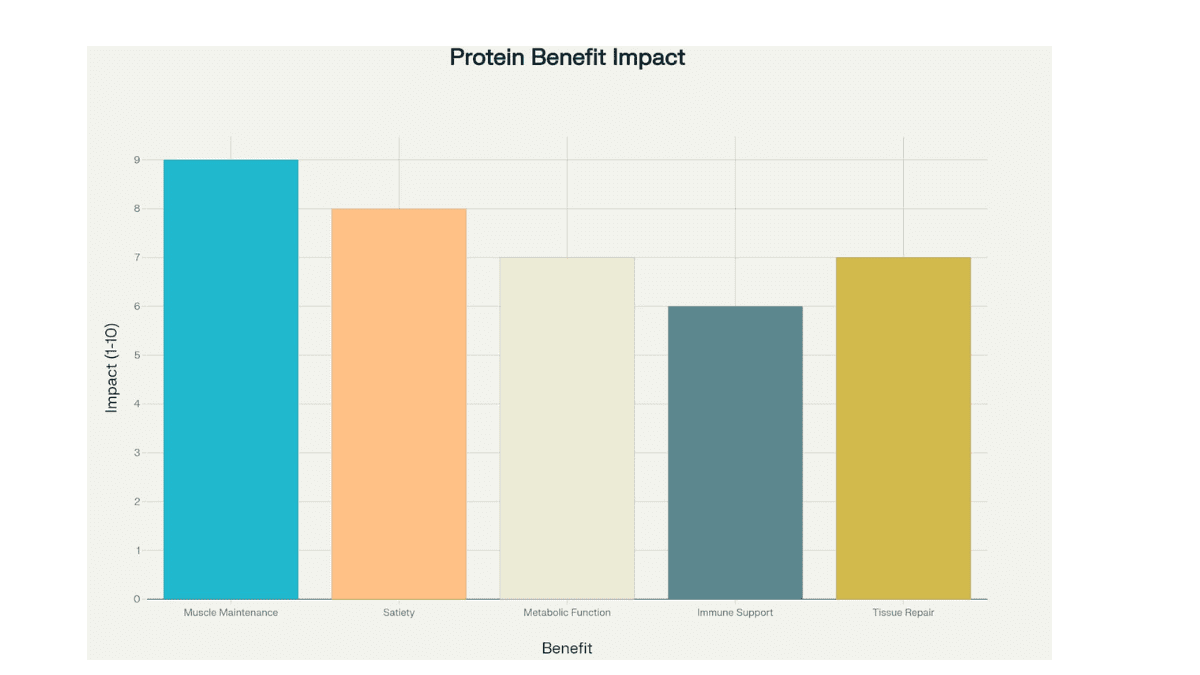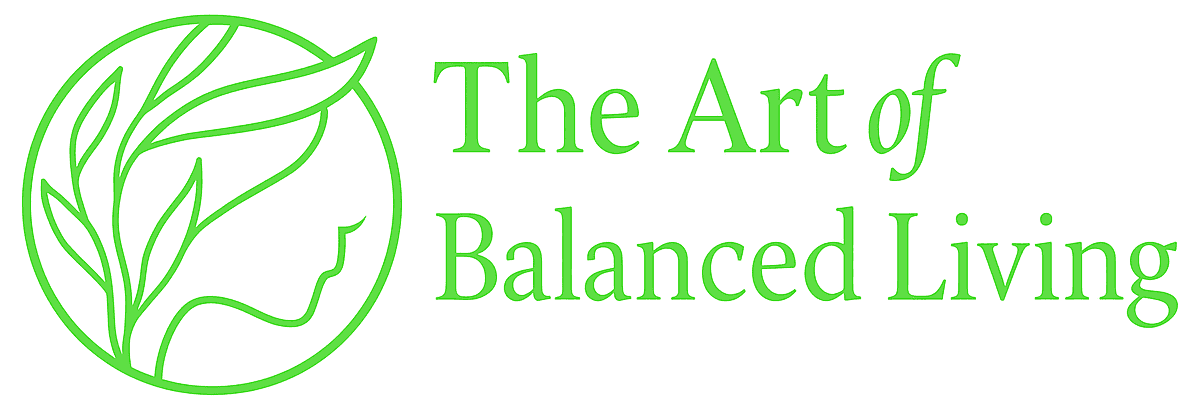
1. What Is Protein? And Why Does It Matter?
Protein is one of the three essential macronutrients that your body needs every day. It’s made up of building blocks called amino acids, which support nearly every biological process in your body. Out of the 20 amino acids, 9 are essential—meaning your body can’t make them, so you must get them through food.
This complete guide to protein explains its foundational role in your daily diet, helping you understand how to meet your nutritional goals naturally.
Protein is used to build and repair muscles, support hormone and enzyme production, and strengthen the immune system. Whether you’re a growing child, a working professional, or an aging adult, protein is critical for daily health and performance.
When protein intake is optimal, your body recovers faster, maintains stronger skin and hair, and resists illness more effectively. From your DNA to your hair strands, protein plays a structural and functional role across the human body.
Key Takeaways:
- Protein is essential for body repair and maintenance.
- 9 of the 20 amino acids must come from food.
- It helps in making enzymes, hormones, and antibodies.
- Each gram provides 4 calories.
- It is found in every cell of the body—from skin to organs.
By the end of this complete guide to protein, you’ll understand its impact on strength, immunity, and energy.
2. Types of Protein: Complete vs. Incomplete

Proteins are classified based on their amino acid profile. A complete protein contains all 9 essential amino acids in adequate amounts. These are usually found in animal-based sources like eggs, meat, poultry, fish, and dairy, and some plant sources like soy and quinoa.
Incomplete proteins, typically found in plant-based foods such as lentils, beans, nuts, and seeds, lack one or more essential amino acids. But by combining different plant foods (e.g., rice + dal), you can easily form a complete amino acid profile.
Understanding these differences is key for vegetarians and vegans. With thoughtful pairing, you can create complete proteins in every meal, ensuring that your body receives all the amino acids it needs for repair and growth.
In this complete guide to protein, we explore how both complete and incomplete sources can fit into your balanced diet.
Examples:
- Complete: Eggs, tofu, chicken, fish, paneer, soybeans.
- Incomplete: Grains, legumes, seeds, nuts
- Smart Combos: Dal + rice, hummus + pita, peanut butter + whole wheat bread
3. What Protein Does in the Body
Protein plays a crucial role in keeping your body functioning efficiently. It’s involved in everything from muscle repair to oxygen transport.
It’s not just for athletes or bodybuilders—protein affects your immune system, metabolism, hormones, and even mental health. Adequate protein helps regulate blood sugar, repair tissue, and keep your body energized throughout the day.
This complete guide to protein outlines how protein powers everything from recovery to mental clarity.
Key Functions:
- Builds and repairs muscle tissue
- Supports immune health (antibodies)
- Produces enzymes and hormones (like insulin)
- Transports oxygen via hemoglobin
- Helps with digestion and nutrient absorption
4. How Much Protein Do You Need?
Protein needs vary based on your age, activity level, and overall health. The Recommended Dietary Allowance (RDA) is 0.8 grams per kilogram of body weight for sedentary adults. However, active individuals, pregnant women, and older adults may need more.
Factors such as muscle mass, metabolic rate, and fitness goals also influence your protein needs. People recovering from surgery or illness may benefit from a higher intake to accelerate healing.
General Guidelines:
- Sedentary adult: 0.8g/kg
- Active adults: 1.2–2.0g/kg
- Elderly: 1.2–1.5g/kg
- Pregnant women: Add 25g/day
Example: A 60 kg woman needs a minimum of 48g protein/day. If she’s active, she may need up to 90g.
This complete guide to protein helps you calculate realistic and personalized intake goals.
5. Best Natural Sources of Protein
Eating a mix of high-quality protein sources helps your body get all essential amino acids. Animal sources are usually complete, while plant-based ones require smart combinations.
Choose fresh, minimally processed sources whenever possible. Avoid relying heavily on processed meats or packaged bars, which may be high in sodium or sugar.
Top Animal-Based Sources:
- Eggs
- Chicken
- Fish
- Greek yogurt
- Paneer
Top Plant-Based Sources:
- Lentils (moong, masoor, urad)
- Chickpeas, rajma
- Quinoa
- Tofu, tempeh
- Nuts and seeds (almonds, chia, flax)
This complete guide to protein encourages including a variety of sources across meals.
Tip: Include protein in every major meal to ensure a steady supply throughout the day.
6. Benefits of Eating Enough Protein

Getting sufficient protein daily has wide-ranging health benefits beyond muscle building. It affects energy, metabolism, hormones, and more.
Protein increases the thermic effect of food (TEF), helping your body burn more calories during digestion. It also keeps you fuller longer, reducing unnecessary snacking or overeating.
One major benefit you’ll discover in this complete guide to protein is its role in metabolism and fat-burning.
Why It Matters:
- Improves metabolism and burns more calories
- Reduces appetite and helps in weight control
- Builds and maintains lean muscle mass
- Strengthens bones and improves skin health
- Aids in faster recovery post-illness or workout
7. Are High-Protein Diets Safe?
There’s a common myth that high-protein diets damage the kidneys. However, for healthy individuals, there’s no scientific evidence that a higher intake causes harm.
It’s important to focus on the quality of protein, not just quantity. High-protein diets should include fiber, healthy fats, and a variety of nutrients to avoid imbalance.
Guidelines:
- Drink enough water to support kidney function
- Choose lean proteins and limit processed meats
- Balance with fiber-rich vegetables and whole grains
- Monitor total caloric intake
Caution: If you have existing kidney conditions, consult your doctor before increasing protein intake.
8. Signs You’re Not Eating Enough Protein
A lack of dietary protein can lead to multiple issues, especially if your diet is carb-heavy or low in variety.
Early signs often go unnoticed but can become more serious over time. Hair fall, frequent illness, and low energy could all be protein-related.
Common Signs of Deficiency:
- Fatigue and weakness
- Muscle loss or poor muscle tone
- Frequent infections or slow recovery
- Hair thinning or brittle nails
- Edema (fluid retention) in severe cases
Vegetarians and the elderly are at higher risk if they don’t plan meals well.
This complete guide to protein helps you identify these warning signs early.
9. How to Increase Protein Intake Naturally
You don’t need expensive powders to meet your protein needs. Smart meal planning can do the job just fine.
Use everyday Indian foods creatively. Adding curd to paratha, seeds to sabzi, or sprouts to breakfast are small but effective tricks.
Practical Tips:
- Start your day with eggs, chilla, or tofu toast
- Add sprouts, curd, or paneer to lunch
- Include roasted chana or trail mix for snacks
- Use besan, soya, or multigrain flour for rotis
- Add seeds (pumpkin, flax) to smoothies or salads
This complete guide to protein proves that high intake is possible without supplements.
10. Protein in Indian Diets

Traditional Indian meals are often cereal-dominant, which are low in protein. However, small changes can make a big difference.
Both rural and urban diets can be adapted without increasing the grocery budget. Familiar foods like dal, chana, and curd are powerful protein allies.
Boost Protein in Daily Indian Meals:
- Combine dal with rice or roti for complete protein
- Use paneer, dahi, or egg curry regularly
- Add sprouts to poha or upma
- Use soy chunks in pulao or curry
- Replace maida with besan or millet flour in recipes
Use this complete guide to protein to adapt your meals without stress.
11. Protein Myths vs. Fact
Myth: You can’t get enough protein on a vegetarian diet.
Fact: You absolutely can with smart food combinations.
Myth: More protein = more muscle.
Fact: You need strength training too.
Myth: All protein powders are bad.
Fact: Clean, plant-based, or whey isolates are safe.
Myth: High protein intake harms the kidneys.
Fact: Only a concern for people with pre-existing kidney disease.
This complete guide to protein breaks the myths that confuse many readers.
If you’re starting your protein journey and want a clean, beginner-friendly option, I highly recommend OZiva Clean Whey Protein. It provides 27g protein per scoop, supports muscle recovery, and is easy to digest—perfect for weight loss and healthy living.
Disclosure: This link is part of my Amazon affiliate program. If you buy through this link, I may earn a small commission at no extra cost to you. I only share products I trust and find useful.
12. Frequently Asked Questions (FAQs)
Got questions? This complete guide to protein answers the most common doubts people have…
Q1: Can I build muscle without supplements?
Yes. Natural foods like eggs, dal, paneer, and soy are enough.
Q2: Is plant protein complete?
Not always, but variety ensures complete amino acid intake.
Q3: What’s a good protein intake for a 65 kg active woman?
Roughly 80–100 grams daily.
Q4: What are quick protein snacks?
Chana, boiled eggs, yogurt, nuts, and paneer sticks.
Q5: Can kids have too much protein?
Yes. Stick to age-specific needs. Overconsumption isn’t better.
Q6: Is eating high protein good during weight loss?
Absolutely! It helps preserve muscle and increases satiety.
Q7: When is the best time to consume protein?
Spread it across the day: 20–30g per meal.
Q8: Are protein bars healthy?
Only if low in sugar and made with clean ingredients.
Q9: Do seniors need more protein?
Yes, to prevent age-related muscle loss (sarcopenia).
Q10: Does cooking destroy protein?
No. Cooking denatures it but doesn’t reduce its nutritional value.
Q11: Is it okay to eat protein before bed?
Yes. A light protein snack like curd or milk may improve recovery.
13. Infographic Table: Daily Protein Needs by Age & Activity
Use this chart as part of your personalized planning from our complete guide to protein.
| Group | Recommended Intake (g/kg) | Avg Weight | Total (g/day) |
| Sedentary Adults | 0.8 | 60–70 kg | 48–56 g |
| Active Adults | 1.2–2.0 | 60–75 kg | 72–150 g |
| Elderly Adults | 1.2–1.5 | 60–65 kg | 72–97.5 g |
| Pregnant Women | +25g/day | — | ~75–90 g |
| Children (4–8 years) | 0.95 | ~22 kg | ~20.9 g |
| Children (1–3 years) | 1.05 | ~13 kg | ~13.7 g |
Final Thought
As shared throughout this complete guide to protein, it’s essential, not optional. Whether you’re aiming to lose weight, build muscle, or simply stay healthy, protein is a cornerstone of your nutrition. With smart choices—even on a vegetarian Indian diet—you can easily meet your daily needs.
Remember, it’s not just how much protein you eat, but how consistently you include it in your meals. Prioritize whole food sources and aim for balance with carbs and fats to unlock protein’s full potential.
Balance, variety, and quality matter more than quantity.
Want a practical, easy-to-follow high-protein food list?
Download the free
Indian Protein Food Chart (PDF).
Share this complete guide to protein with anyone confused about how much protein they need! And comment if you have any questions.
Disclaimer: This article is for educational purposes only and is not a substitute for professional medical advice. Always consult a qualified healthcare provider for personal guidance.
